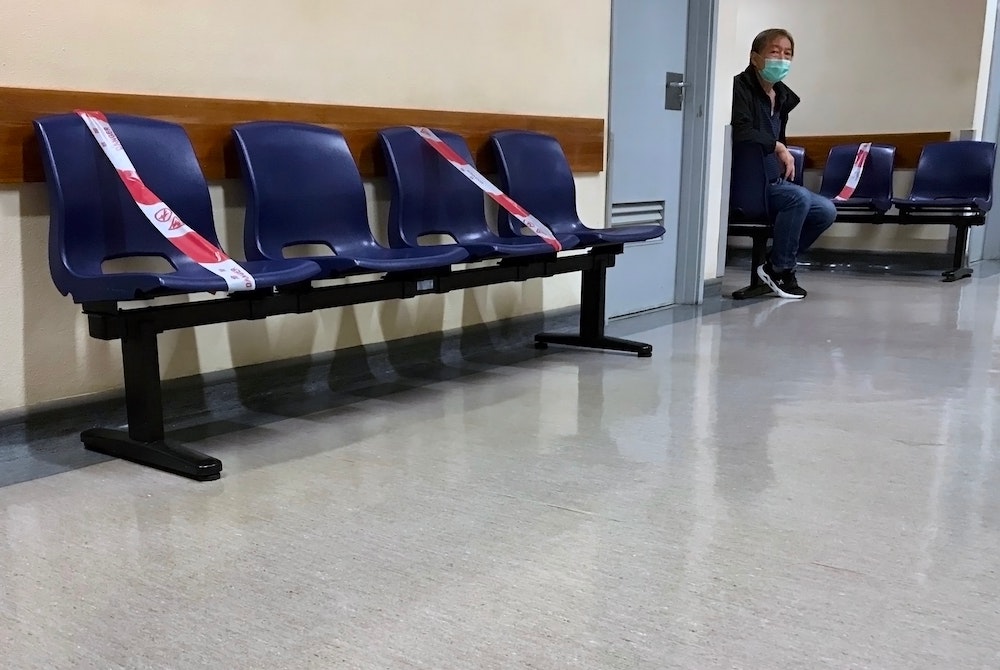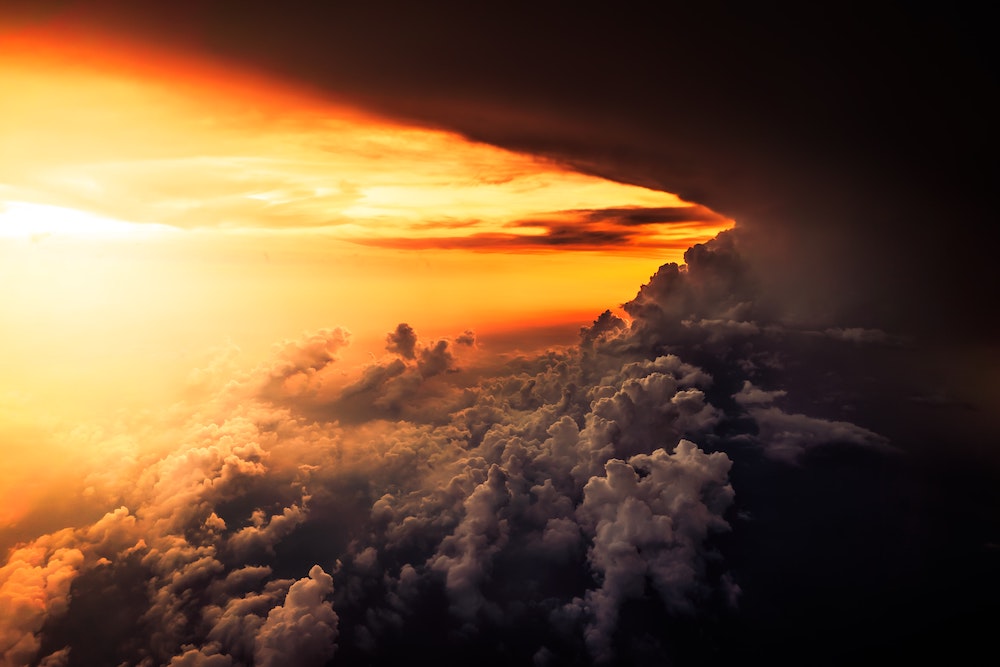
(Unsplash/Macau Photo Agency)
"The emotion in this country is as high as I can recall."
—New York Gov. Andrew Cuomo, April 18, 2020
Look at a picture of the coronavirus straight on. It looks like a pizza with all its saucy pieces pulled apart to the side and flying off from each other forever. Look at it from another angle and you see a World War II sea mine about to explode and shatter into a million pieces. These images are apt metaphors for what this virus represents. It represents what we have become.
At a time when we thought the idea of Oneness was rising in consciousness, the original sin of thinking we're better off apart from God and each other is crying for dominion, an idea that brings only decay and death in its wake. We are a ship of fools exploding from buried ideas of separateness.
We watch news of the plague in our separate spaces, wear masks to hide our masks and keep a safe distance from the neighbor who is our self (Mark 12:31). The coronavirus is more than a metaphor. It's an outward manifestation of a collective consciousness that for too long has valued fear of stranger over love of neighbor, separation rather than Oneness as the only way out. We are Adam and Eve all over again.
The notion of nationalism that scarred the 20th century flies its tattered flags once again all over the globe. Gordon Gekko is alive and well in the United States while the beggar Lazarus (Luke 16:19-31) continues to bang at its gate. The waters that parted for the Israelites threaten to overwhelm our shores, while children in sub-Saharan Africa don't have enough water to drink. Capitalism has triumphed over community. Sarcasm has trumped irony. And here we are, stuck in our caves, watching it all on TV.
There's a cartoon in The New Yorker of a little boy in bed pulling the covers up as he sees a horned monster coming out of the closet. The monster says, "I'm not a metaphor."
Advertisement
A metaphor is an idea, a thought, and a thought is a unit of energy. According to the first law of thermodynamics, energy can be neither created nor destroyed, only transmuted into other forms of energy. Thoughts become emotions. Then actions. Even symptoms. A fearful emotion is highly charged. Only perfect love can extinguish it (1 John 4:18). We are living in a time of specific terror and anxiety. It's not a leap to think that a universal experience of fear may transmute into a sickness that can strike with ferocity anywhere in the globe.
"What I feared has come upon me," cried Job. "What I dreaded has happened to me. I have no peace, no quietness, I have no rest, but only turmoil" (Job 3:25-26).
We can look at what is happening to us now the same way we look at a picture of the coronavirus and see an undersea mine about to explode or a pizza being torn apart and ripped away from the whole.
The Russian geochemist Vladimir Ivanovich Vernadsky (1863-1945) was the first to popularize the term noosphere, a sphere of mental activity that rises from everyone everywhere and affects everything. Philosopher Pierre Teilhard de Chardin (1881-1955) took the notion of the noosphere to a new level, seeing it as evolving ever higher into Christ-consciousness.
Psychiatrist Thomas Hora (1914-95) cautioned about the "sea of mental garbage," the flotsam of ideas swirling in the ecosphere and obtaining in individual consciousness where our only choice is to be interested in this one or that one.
Futurist Barbara Marx Hubbard (1929-2019) wrote of conscious evolution, calling us co-creators with God through our interest in making choices toward a new creation. God assured us, "Behold, I will create a new heaven [noosphere] and a new earth. Past things will not be remembered. They will not come to mind" (Isaiah 65:17).
The only thing we do not know is when universal Christ-consciousness will be the only consciousness. Our experience of it depends on the choices all of us make. Meanwhile, there is nothing surprising about the coronavirus. It is an idea as old as the plagues that tormented Egypt. "What has been will be again, what has been done will be done again; there is nothing new under the sun" (Ecclesiastes 1:9).

(Unsplash/Arto Marttinen)
The good news is that in God's eye the new creation is already here. It is here for anyone blessed with eyes to see the invisible goodness, beauty and oneness that is within us and infuses everything around us (Matthew 13:16), despite appearances. To be interested in love, not fear, in the midst of terror is to realize peace, quietness and rest, no matter what.
[Michael Leach is publisher emeritus of Orbis Books and editor of NCR's Soul Seeing columns.]
Editor's note: We can send you an email every time Soul Seeing is published so you don't miss it. Go to our sign-up page and select Soul Seeing.






